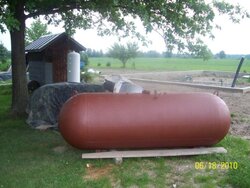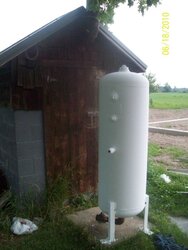In my search for a gasifier, I'm starting to get a little scared of the nearly $20K for a Garn with the garn barn and all the associated trimmings.
It seems like an indoor gasser with storage might be a bit cheaper, albeit placed outside in an insulated shed.
Question though becomes are there any indoor gasifiers with a firebox at least 24" long? I can't imagine cutting all my wood to 18" or even being relligious about 20". My wood stove now takes 24" and often pieces are diagnonal....
I had ruled out the outdoor Econoburn becuase of the limited 22" firebox. I don't need 36"....but 30" would be ideal....but 18-22" just seems to be "wrong" for my mindset with an outdoor setup.
Am I missing something indoors?
Thanks to all!
One last bonus question: If one no longer burns oil, how long does fuel oil stay good for sitting around for backup?? Is that a legitimate concern?
It seems like an indoor gasser with storage might be a bit cheaper, albeit placed outside in an insulated shed.
Question though becomes are there any indoor gasifiers with a firebox at least 24" long? I can't imagine cutting all my wood to 18" or even being relligious about 20". My wood stove now takes 24" and often pieces are diagnonal....
I had ruled out the outdoor Econoburn becuase of the limited 22" firebox. I don't need 36"....but 30" would be ideal....but 18-22" just seems to be "wrong" for my mindset with an outdoor setup.
Am I missing something indoors?
Thanks to all!
One last bonus question: If one no longer burns oil, how long does fuel oil stay good for sitting around for backup?? Is that a legitimate concern?



